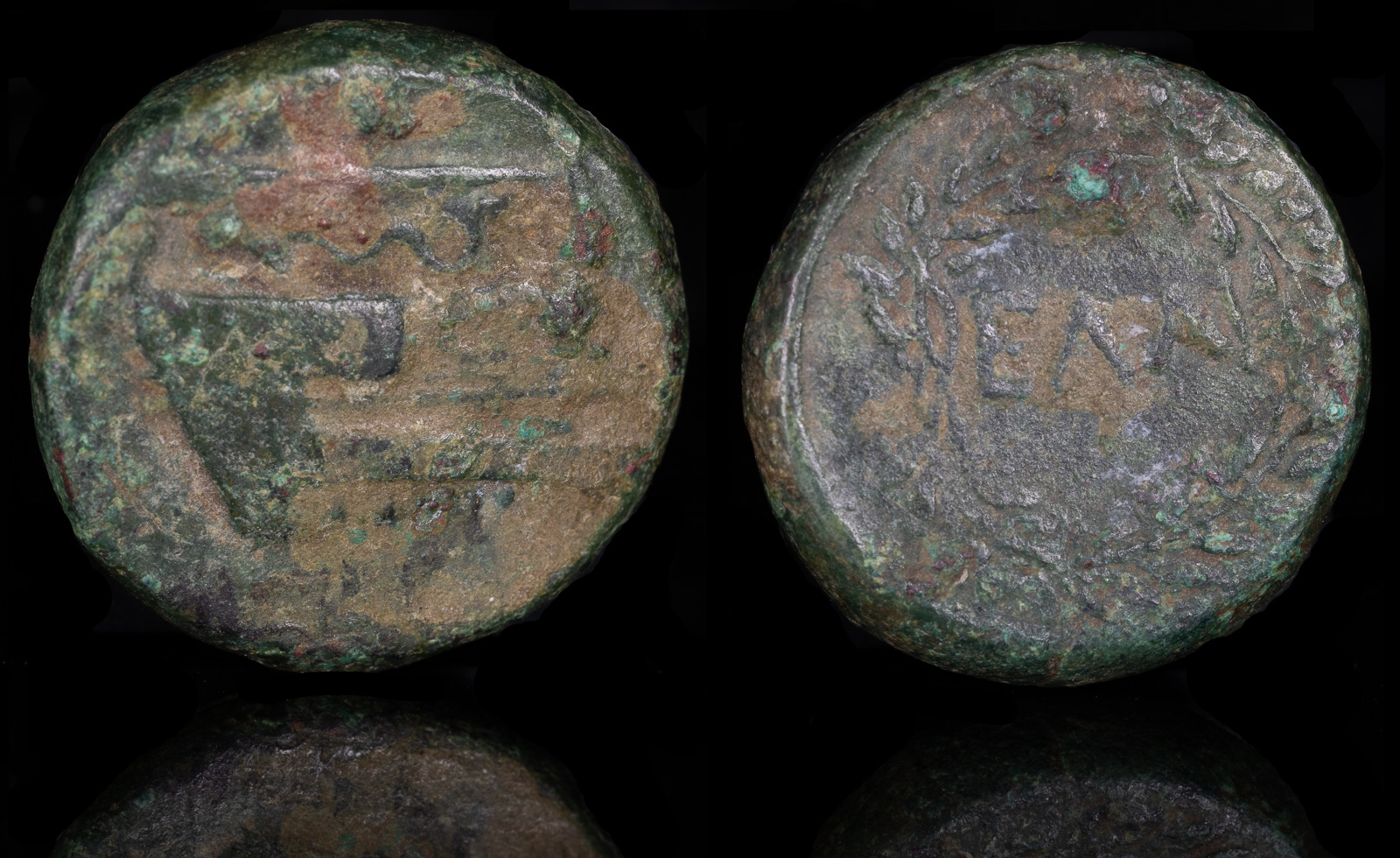
Thrace, Elaios
Æ 6.86g, 18mm, 3h.
Late 4th-3rd centuries BCE
Prow of galley to right
EΛΑΙ within laurel wreath
SNG Copenhagen 889-90; HGC 3.2, 1456
Ex Roma
According to Homer, Elaios was the first place where the Greeks stepped foot on land. This was accomplished by Protesilaos, who was therefore willed by the gods to die. He did manage to take down four of the enemy before Hector got him. His brother Podarkes joined the war in his stead. His widow, Laodamia, was so distraught at his death that the gods allowed Protesilaos to visit her from the underworld. At first she was overjoyed, but when she learned that he had to return, she grew even more despondent.
She then created a statue of him and worshipped it. When her father became more than a little worried about her fanaticism, he ordered the statue burned. No longer able to keep herself from her husband’s image, she jumped into the fire to join it and perished.
While there is coinage from the area that depicts Protesilaos, my coin does not. Instead it has a gallery, which was typical of port cities. During the ancient times there was a temple to Protesilaos here, and Alexander the Great is documented as visiting it. Alexander the Great had made it clear that he was to be the first of his army to set foot in Asia, and he probably wanted to chat with Protesilaos and the gods to make sure everyone was cool with that.
In modern times, a stele was found declaring that the city was under the guardianship of the Greek general Chares. The city also played a part in the Persian invasions (serving as a headquarters) and the Pelopennesian War.
During World War I, the area was heavily damaged by fighting, though the French soldiers first plundered the area and many of its artifacts are visible in the Louvre today.
The Persian satrap Artayctes desecrates the grove of Protesilaos at Elaios. He is later crucified for the offense by the Athenian general Xanthippos.
Lysander destroys the Athenian fleet at the mouth of the Aigiospotamoi. Just before, the Athenian triremes arrive at Elaios to discover that Lysander is in control of Lampsakos.
Alexander the Great visits the temple to Protesilaos at Elaios.
Aspendos surrenders to the Romans. The general Verres plunders its art treasures. Elaios also offers their city.
The fleet of Constantine I takes moorage at Elaios against Licinius.